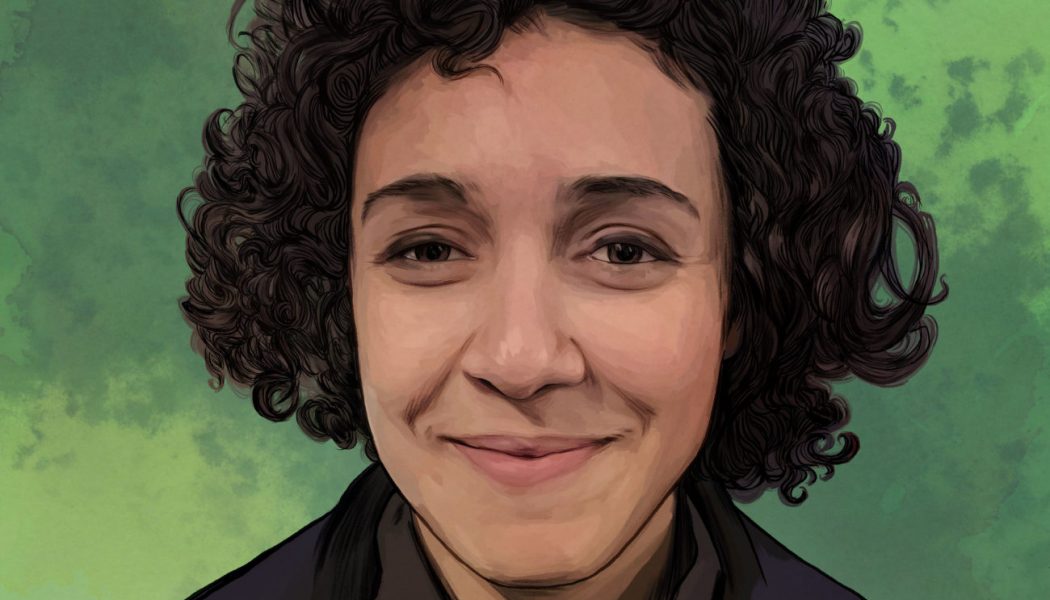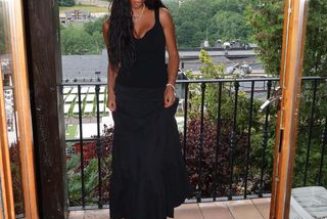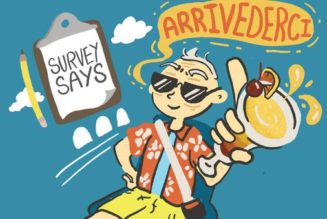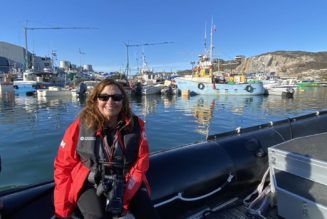
This week on The Trip podcast, publisher Jade George on Beirut’s booze culture and her hopes for Lebanon.
The rain is coming down in Hamra, Beirut on a Wednesday and Jade George are headed out to drink. We are going to drink gimlets, we’re going to drink Manhattans, and we are going to drink Negronis, because you drink in Lebanon for the same reasons you drink in Lima, Ohio and Los Angeles, California. You can cope in those cups, you get that conviviality, that extra 5% burden melting off your shoulders. Sure, maybe it’s also a bit of a maintenance high, but here in Beirut, there’s an urgency to the drinking. Jade tells me that during the revolution, everybody is smoking and drinking more. And you know, they can. Despite the call to prayer ringing from every mosque, despite Hamra being the old Muslim quarter, this a live and let drink city, with a deep bar culture, and a history of interfaith intoxication.
And maybe that is how this revolution is going to overcome the sclerotic high priests of corruption it is fighting against. Screw just getting by, maybe you need a little liquid courage for the rest, you need to be a little like you’re spilling out of the Stonewall Inn, ready to fight back for good, like you remember all the American founding fathers and revolutionaries were drinkers and distillers as well.
So as Jade and I march out to Bar Ferdinand, and then back to the studio to talk about her role as the Middle East Chairwoman of The World’s 50 Best, and about her life in publishing in Beirut, remember you can’t spell barricade without bar, and this is a drinking podcast that is 1000 percent behind the Lebanese revolution.
Here is an edited and condensed transcript from my conversation with Jade. Subscribers can listen to the full episode here. If you’re not on Luminary yet, subscribe and listen (and get a 7-day free trial) by signing up here.
Nathan Thornburgh: Tell me where we are now.
Jade George: We’re in my house. It is in Ras Beirut, in an area called Hamra. I recently moved in after I kind of got a bit too romantic after releasing The Carton‘s 16th edition, which is titled “Extinction.” It was a three-volume set, and one of the volumes was covered with all these beautiful houses and mansions around the country, mostly in Beirut and Tripoli. And we talk to these different families that own these houses. They used to be really wealthy, but then inherited a house and couldn’t afford to maintain it.
And at the same time, Kalei Coffee Company, which is where The Carton shop opened its first location, was looking for a second location for their coffee roastery. And they happened to find the ground floor of this house and the second floor was vacant, and I think we got a little over-excited and decided to restore the house and move into it. It was unrealistic to move in and pay that kind of rent and that kind of fee on restoration. So we had to think about how we could afford to stay in it, and that’s how the idea of hosting friends and friends of friends in the apartment came about.
Romance by definition comes from an organ that’s not your brain.
Thornburgh: I guess that’s the romance part—these are buildings, apartments, and ways of living that are going not just out of style, but out of existence.
George: But what is romance? Romance by definition comes from an organ that’s not your brain. A friend recently asked me, “Are you romantic about Lebanon?” And I asked him what he meant. He said,”Do you feel things about the country that your brain can’t exactly explain, or can’t explain why you tolerate them, and you still go on doing so?” And I said, “Hell yeah. I’m romantic about Lebanon. What are you talking about?”
You do these things that you would not do otherwise. I think that’s it in a nutshell.
Thornburgh: How did The Carton get started? Why did it feel like another romantic moment in your life?
Jade George: I come from a journalism and food background. I’ve worked in both industries. And then in 2010, I left a publishing job and went on a soul searching trip in the U.S., wondering what to do next. And I knew that I wanted to write about, not Lebanon in particular, but the Middle East. I had been working super hardcore, and then just went on a trip with no purpose, no financial worries, a month traveling around. I came back to Lebanon after that and I sat with a good friend of mine at the time and I told her that I would like to publish a print publication that talks about the Middle East, using food as a vehicle to tell stories that are kind of on the serious side. So she said, “I don’t know what you’re talking about, but I kind of like the sound of that. How can I help?”
And so I had $5,000 in the bank at the time. And I said, “What the hell? Let me just investigate the process. How do you do it?” Just the legal stuff and setting up the company. And it’s actually more difficult in Lebanon than it is in the U.K. and Europe. You can go to a printing press in Berlin, let’s say, and just hand them a file and they’ll print it for you. It doesn’t work that way in Lebanon. You have to have a very specific permit to be able to go to any printing press, show them this permit to be able to publish literally anything. So we had to go through that whole debacle, and eventually we managed, and published our first edition with contributors only. So I contacted different people I had worked with in the publishing industry and food and they got really excited.
They said, “We’re happy you’re back in the game. Yeah, sure, we’ll take photos for you. We’ll illustrate, we’ll write.” And so it started that way. And by the second and third edition, people started to see the product and they were excited, because they felt it was really honest. Writers that usually get commissioned to do something in a very specific way were like, Whoa, we have creative freedom. And it snowballed from there. And at a given time, so at a given edition, we’d have two, three waiting lists of contributors willing to contribute for free to this publication.
Thornburgh: Tell me the most ‘Carton’ story that you’ve published.
George: One of the stories that always comes to mind is the story of a journalist who got arrested for shoplifting in Beirut. She was just at a supermarket. She just pocketed a lipstick and got immediately arrested and thrown into jail with all sorts of people, from domestic workers that were accused of doing something they hadn’t done, to proper criminals. And she was there for weeks with no court dates, no phone calls or lawyers or anything.
Thornburgh: No way to bail out?
Jade George: Absolutely not, because people didn’t even know. She was married at the time. Her husband didn’t even know where she was, where they had locked her up. And the only way she would keep track of anything like the days and the hours passing was through this notebook she had. She just kept a food journal of when people walked in, like tea time, and that sort of thing. And when she came out, we had a chat. And then we decided to publish this journal in a visual way, but then also she talked a bit about her experience. And clearly it’s not about the food journal or the food. We have a very unjust judicial system in Lebanon, where things like that can easily happen and people can be locked up for six years with no court date. They could be people that are foreigners and people, their families back home don’t know anything about where they are, why they haven’t heard from them. So the story tackled that whole situation.
Thornburgh: So you leave for milk in the morning, you get a little light-fingered, then suddenly nobody knows where you are for weeks and weeks on end. Well, that’s good to know. I’ll keep my hands in my pocket next time I’m shopping here in Beirut.
George: No lipsticks for you.
I was never into critiquing restaurants. I always feel like food should be a constructive thing.
Thornburgh: You’ve also worked in high cuisine and sort of straight up fine dining. How did you get into that, and what was your experience there?
George: I worked in a food concept-building for a while, and then moved around in publishing. One of the publishing houses I worked for owned the Time Out here. And I was food editor and senior editor. I worked my way up the ladder.
Thornburgh: What is food concept-building?
George: It’s working in a company that designs restaurants from A to Z. And food was always something that I worked in. Even when I was in college, I was a mystery shopper just to get free meals in nice restaurants.
Thornburgh: And you would just tell stories about what they had done and how the service was?
George: Yes. So after that, the thing that opened up the world of fine dining to me was getting involved in the World’s 50 Best Restaurants awards. So seven years ago, I got a phone call from the Academy telling me that a few people had mentioned my name after the old chairperson of the Middle East stepped down because he had moved from the region. And then I went on from there. I was appointed as chairperson of the Middle East. I was never into critiquing restaurants. I always feel like food should be a constructive thing. And for me, it’s more about the culture and the socio-politics behind a restaurant or a project. But the plus side of being in something like this is that you meet really interesting people that are doing great things for the industry, and for the world and for food in general.
Thornburgh: If there was one place in Beirut that people—speaking in your role as team chairwoman of the Middle East region, someone who knows of the finer things of life—should go?
George: I’m very biased to Kalei. I’m involved with the business, and in a sister business with The Carton shops on the premises of the two branches of Kalei in Beirut. So it’s easy for me to love it and say good things about it, but really, very fairly, I would say for a specialty coffee roastery in Beirut, it is surprisingly shocking how good the cocktails and the drinks in general are. I’m not a cocktail drinker, but if I am going to go out for cocktails, it had better be a great experience. And I think Kalei ticks these boxes. And I think two of the drinks that come to mind are one that is mezcal-based, not local at all, and one based on The Carton’s own Arak.
Thornburgh: And that one’s got a great story, because Arak is something that you had been drinking as an underaged individual here, about the process of trying to mask your breath after a long night out as a teenager. So how does this cocktail speak to that delightful memory of your youth?
George: It’s two-fold. When I was a kid and we were living abroad, every summer we came here, my brother and I, we got sick because obviously the water changed, the environment changed. So the second we landed here we used to get sick. And then one summer, a distant uncle suggested that we drank Arak, just a shot. We were five or six or seven years old, and he promised this will be the cure. And it actually worked. Every time we landed in Beirut, they gave us this shot of Arak as children. And then it became this incredible cure for me. The second we had that shot, we never got sick again. I’m not exaggerating.
The idea of the Kalei’s Arak-based cocktail came when we sat down and discussed what could be a good cocktail with Arak, especially for people that don’t like it, because I noticed that people that don’t like Arak generally don’t like licorice, because it has this licorice flavor.
Thornburgh: It’s anis-based.
George: Yes. So how can we get people that generally don’t like that flavor to digest it? And I remembered that when I was a kid and we were underage and we’d go out drinking, when we came back home and didn’t want our parents to know that we’d been out drinking we would pass by this vegetable store that opened late and pick up cucumbers and eat them before we got home. Because cucumbers are so fragrant. They mask the smell of alcohol.
Thornburgh: I’m so fascinated by this, because I’ve never heard that before. That of the many weird things that people would do to mask the smell of alcohol on the breath, just pounding cucumbers?
George: Trial and error, Nathan.
Thornburgh: It started with lettuce, and then we went to beetroot.
George: The drink is great. It has cucumber, but the idea is not just to mask the Arak, it’s really a combination of bitters that brings out all the different layers of flavor.
Thornburgh: What is your dream? What’s your goal for The Carton? What would you like to see it become if we lived in a world that we all deserve?
George: Personally speaking, I’m very passionate about exploring platforms. So essentially The Carton is a medium to explore an alternative narrative around the region. We use food as a vehicle. Different publications and different entities use different ways to talk about the region. Food is our language. I would really like to explore different mediums in bringing this narrative to life and having people experience them that way. But I would like to continue publishing in print. My heart’s core passion would be to publish an issue every month, if it makes financial sense. It remains my utmost desire.









